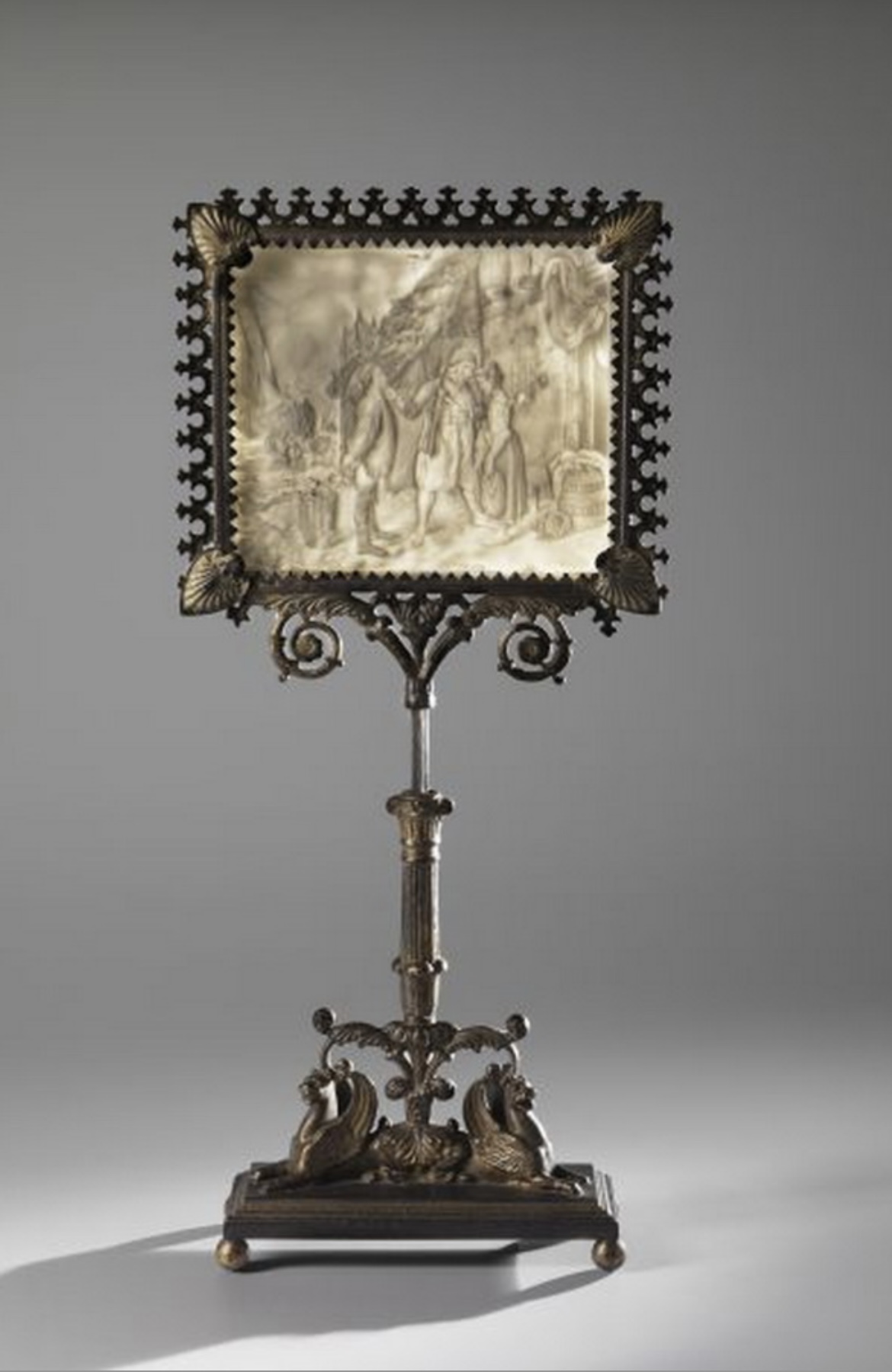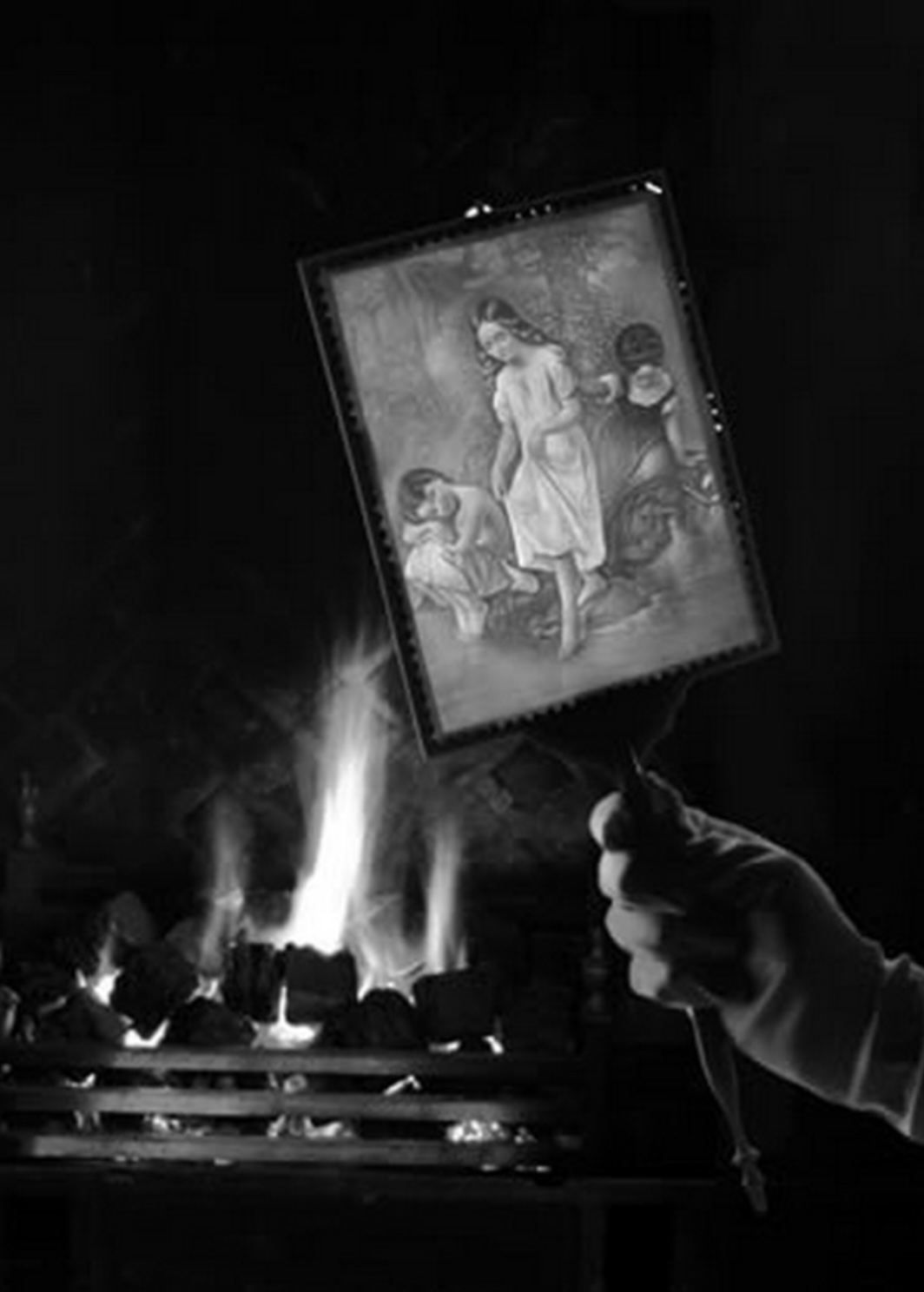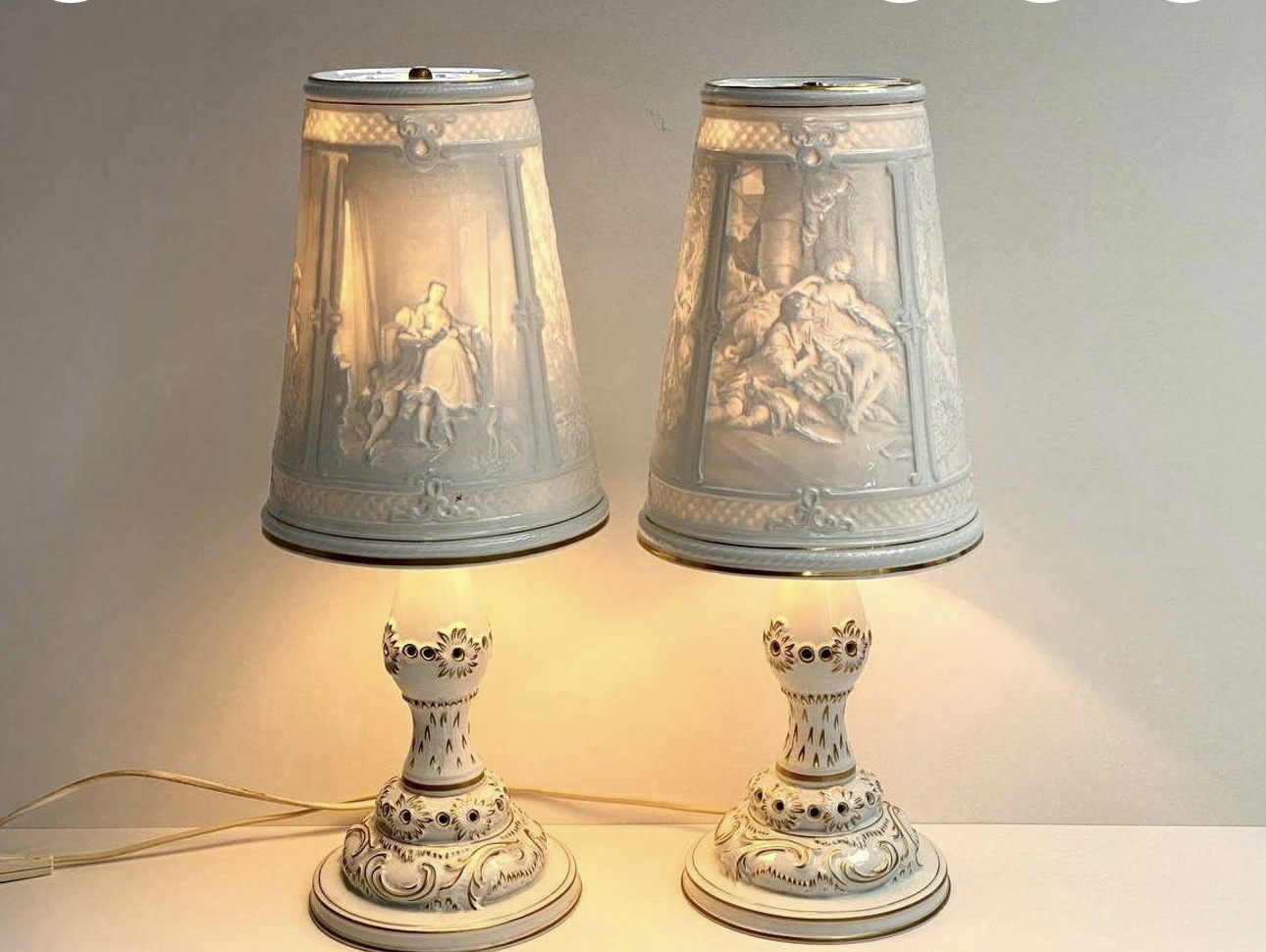A lithophane is a thin plaque of translucent material, normally porcelain, which has been moulded to varying thickness, such that when lit from behind the different thicknesses show as different shades, forming an image. Only when lit from behind does the image display properly. They were invented in the 19th century and became very popular, typically for lampshades, nightlights, or to be hung on windows. They could also be given stands, to be placed in front of a light source. The longest side of a lithophane is typically between 6–10 in (15–25 cm).
The images tended to be artistically unadventurous, mostly repeating designs from prints, or paintings via reproductive prints. A large number were rather sentimental domestic genre scenes, though there were also portraits, landscapes and religious subjects. The technique naturally produced images only in grisaille, tones of grey, but later ones were often painted in translucent paint such as that used for watercolours to give colour images. The name comes from Greek; lithos means "stone," and phainen, means "to cause to appear".
Invented in France in the 1820s, they rapidly became popular and produced in various countries. But Germany soon became the main producer, remaining so for the rest of the century.
Invented in France in the 1820s, they rapidly became popular and produced in various countries. But Germany soon became the main producer, remaining so for the rest of the century.
The largest producer was the Prussian Königliche Porzellan-Manufaktur (KPM) in Berlin, leading to "Berlin transparencies" becoming a common term for them in English. The Plauesche Porzellanmanufaktur in Plaue, Thuringia, Germany, was another large manufacturer, who continued to make them into the second half of the 20th century.
Their peak of production was perhaps from about 1840 to 1870.
Lithofania is like a miracle. It would seem that in the 21st century it is difficult to surprise us with something, but when you pick up a Japanese cup of the finest bone china and raise it to the world, a three-dimensional image suddenly appears at the bottom - a girl's face, and there is no limit to delight!
This small miracle is lithofany. The picture appears due to the different thickness of the porcelain and if you illuminate it from the back side, it gives such a stunning effect. In Japan, famous manufactories that produce porcelain, trying to protect their tableware from counterfeits, decorated the bottom of the cups with the faces of geishas. As a passionate collector of lithophanies, I have found about 30 different images of girls' faces over the years. The more clearly the face is visible, the better the porcelain.
Over time, interest in lithophanies faded.
By the end of the 19th century lithophanes had largely fallen from fashion, but in recent decades they have had something of a revival, using in addition to porcelain, glass, plastic, and with 3D printing sometimes paper.
Their peak of production was perhaps from about 1840 to 1870.
Lithofania is like a miracle. It would seem that in the 21st century it is difficult to surprise us with something, but when you pick up a Japanese cup of the finest bone china and raise it to the world, a three-dimensional image suddenly appears at the bottom - a girl's face, and there is no limit to delight!
This small miracle is lithofany. The picture appears due to the different thickness of the porcelain and if you illuminate it from the back side, it gives such a stunning effect. In Japan, famous manufactories that produce porcelain, trying to protect their tableware from counterfeits, decorated the bottom of the cups with the faces of geishas. As a passionate collector of lithophanies, I have found about 30 different images of girls' faces over the years. The more clearly the face is visible, the better the porcelain.
Over time, interest in lithophanies faded.
By the end of the 19th century lithophanes had largely fallen from fashion, but in recent decades they have had something of a revival, using in addition to porcelain, glass, plastic, and with 3D printing sometimes paper.


